Blog
Sony A7R Review
1/12/13
14th October 2014: Our 12 month review of the A7R is now available HERE
Andy and I have just come back from a weekend of shooting some new landscape images at Boat Harbour, NSW. It was the first outing for the Sony A7R, and it was interesting to compare the images from this, the newest high megapixel full frame camera, with images taken from the Canon 1dX and 5d2.
The Sony A7R setup was with the A7R body, a battery grip, and a Metabones Sony E-mount to Canon EF III adaptor. We used the Canon 16-35mm f2.8II L, Zeiss Distagon 15mm f2.8 and Zeiss Distagon 21mm f2.8 on the various bodies.
We previewed this setup a few weeks ago: Sony A7R Preview
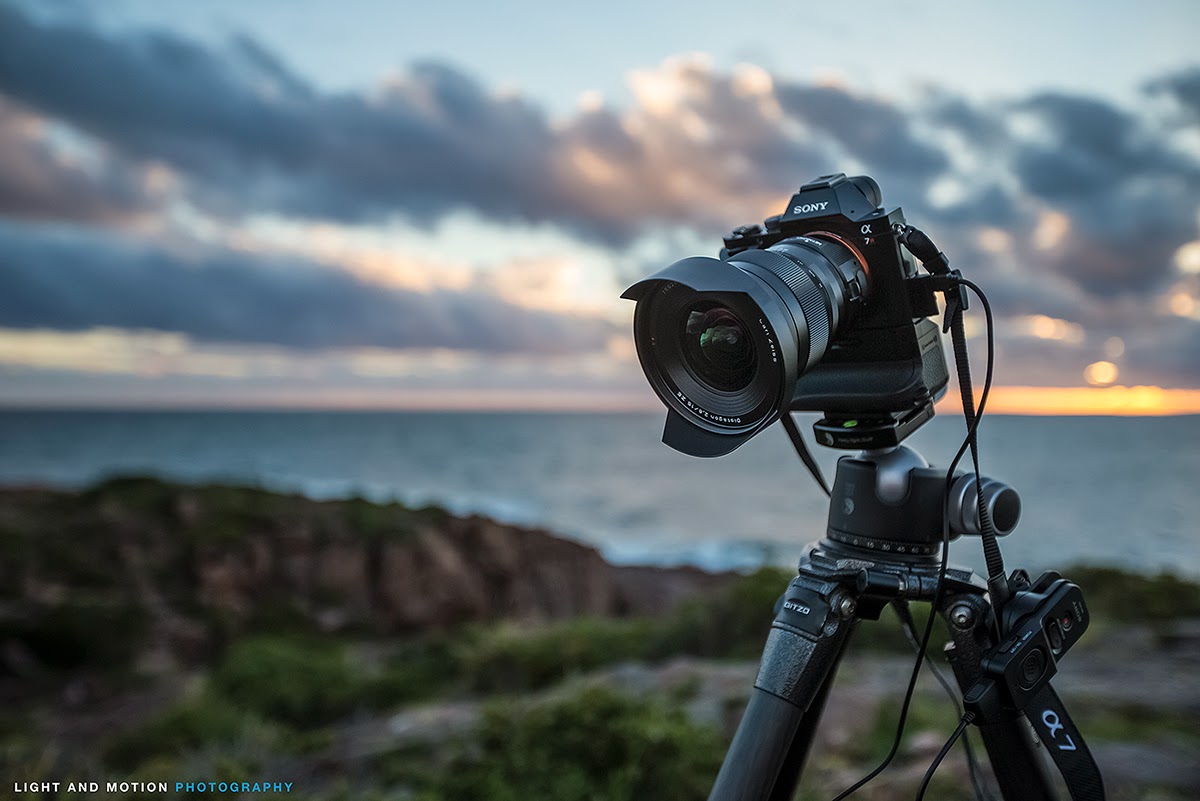
We shot in RAW and compared all images in Adobe Camera RAW 8.3 (Beta). In summary, the Sony A7R produces stunning images, with significantly greater dynamic range than the 1dX. Its rendering of noise was at least the equal of the 1dX. The 5d2 also fared extremely well, a testament to how highly regarded this camera is amongst landscape photographers, even though it is now a 5 year old body and no longer in production.
However, it was the dynamic range of the Sony A7R’s sensor that impressed the most. It was generally 1.3 to 1.6 stops better than the 1dX, itself no slouch. I have not been using graduated ND filters much in the last 6 months anyway, but the dynamic range of the Sony almost renders them irrelevant, and this is without the need for blending bracketed exposures.
In the field, the A7R is fairly simple to use once you familiarize yourself with the layout of the controls. I feel that a grip is mandatory to balance the weight of the Canon Lenses if this is your intended purpose. I removed the Arca-Swiss compatible foot on the metabones adaptor since it was useless once the grip was attached. I used a standard Arca-Swiss plate on the grip, while waiting for a Really Right Stuff L-plate.
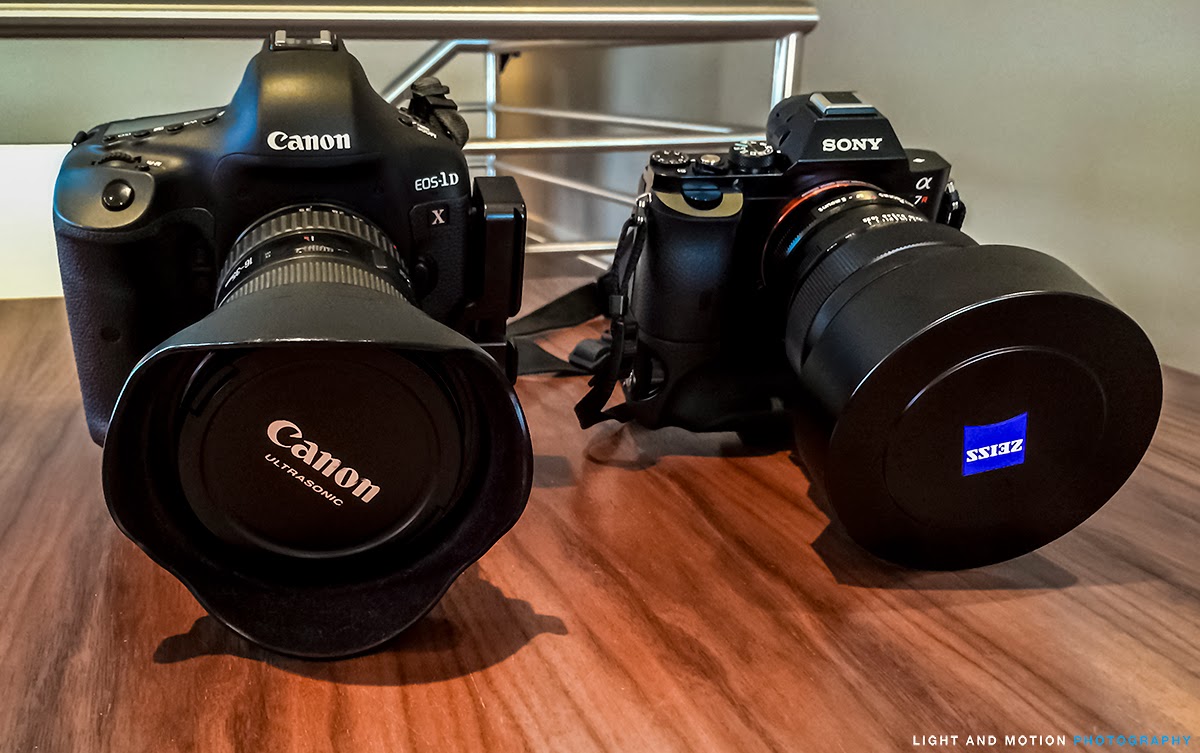
The A7R has a electronic viewfinder that makes manual focus a breeze. As it is a EVF, focusing merely involves moving the focus point to the relevant area, and using the focus magnifier to zoom in to focus at 5X or 10X. I became quite adept at this (by necessity), and was able to easily use my manual Zeiss lens, handheld to take some indoor architectural images as well as portraits.
I mention “by necessity” as the autofocus on my AF Canon Lens (16-35mm f2.8II L and even the 50mm f1.2L) are hopelessly slow and at times fail to lock. The metabones adaptor is the likely issue here.
However, using the native Sony FE lenses (Full Frame E-mount lenses developed specifically for the A7 and A7R), AF was fast and reassuring. I tested the FE 35mm f2.8.
If you plan to use Canon EF lenses with the Metabones adaptor, it is best to manually focus every image, which is simple and quick either with the EVF or on Live View.
Sony A7R Cons:
- Small mirror-less body, needs battery grip to balance EF lenses properly.
- Slow autofocus with Metabones Adaptor. As a result it is not suitable for sport or professional portrait photographers. One shot AF is slow and AI servo is not accurate.
- Although the idea of a 36.4 megapixel camera competing with Medium Format Cameras in wedding photography could be entertained, the native FE lenses are yet to be proven in this field, and the AF is problematic with adaptors. As a result, I don’t envisage the A7R being used in any capacity with pro wedding photographers apart from perhaps as a backup.
- Only 4 fps, so not suitable for sport from this perspective as well.
- Battery charger not included. The battery charges from either an AC or USB source, in camera. Separate charger is $79. If you have a battery grip and don’t have a separate charger, you need to remove the grip and place individual batteries in the camera body to charge.
Sony A7R Pros:
- Small mirror-less body. When used with native FE lenses there is fast and accurate AF. It is a perfect setup for street photography. Remove the grip, and you’re good to go incognito.
- Fantastic Sensor with great dynamic range. Arguably the best of any current DSLR.
- Low noise. ISO up to 51200, still very usable
- 36.4 megapixel sensor – over 50% more than any current Canon DSLR sensor. Detail and resolution unmatched in current Canon lineup. Ideal for large prints.
- When used with a grip, EF lenses (up to 100mm) balances well.
- Excellent EVF, Easy to manual focus with focus magnifier
- Good ergonomics, customizable buttons and controls.
- Cost $2398.00AUD – likely to be 1/3 the price of any future large megapixel Canon offering.
In Summary:
A great addition to the kit of any current Canon Landscape Photographer, particularly if your clients favour large prints. You can use all your existing favourite EF lenses, and manual focus is easy and quick. Factor in the cost of a grip, extra battery and an external charger though.
For Nikon users however, not much to see here. The D800E has virtually the same sensor and pros as the A7R, except size – which some may argue as a con.
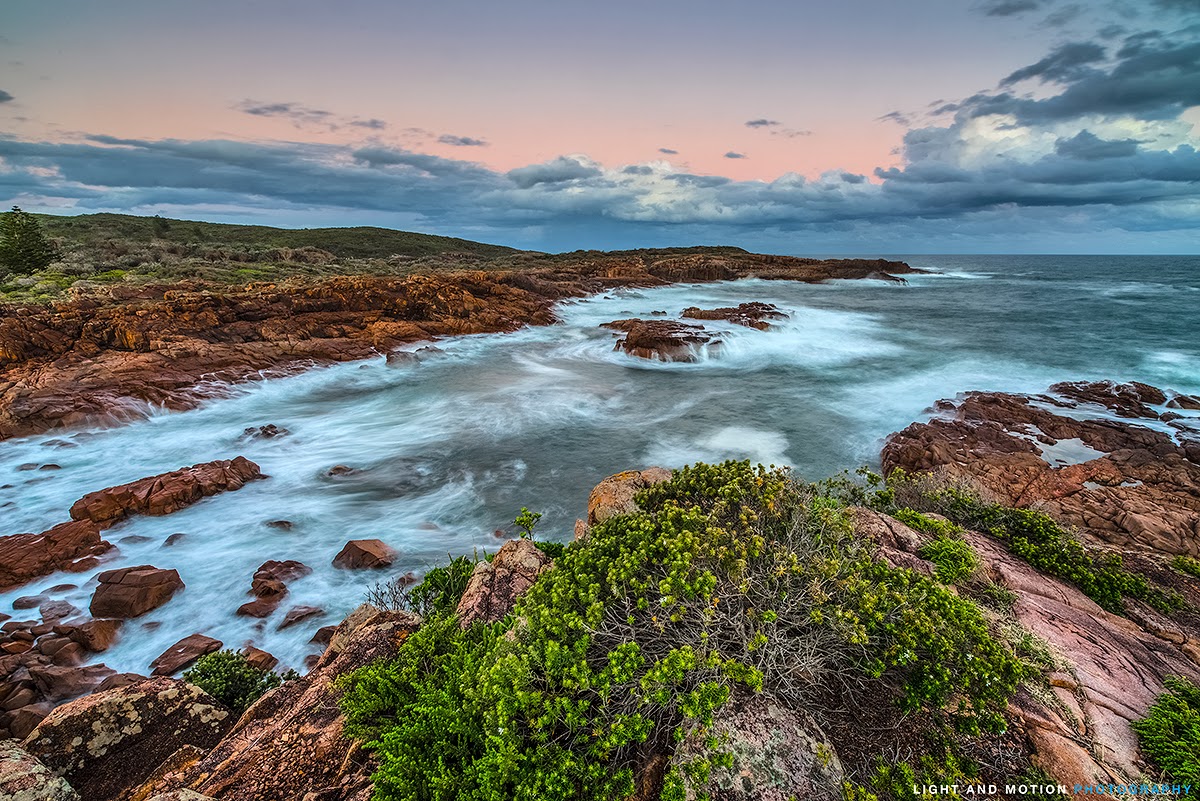
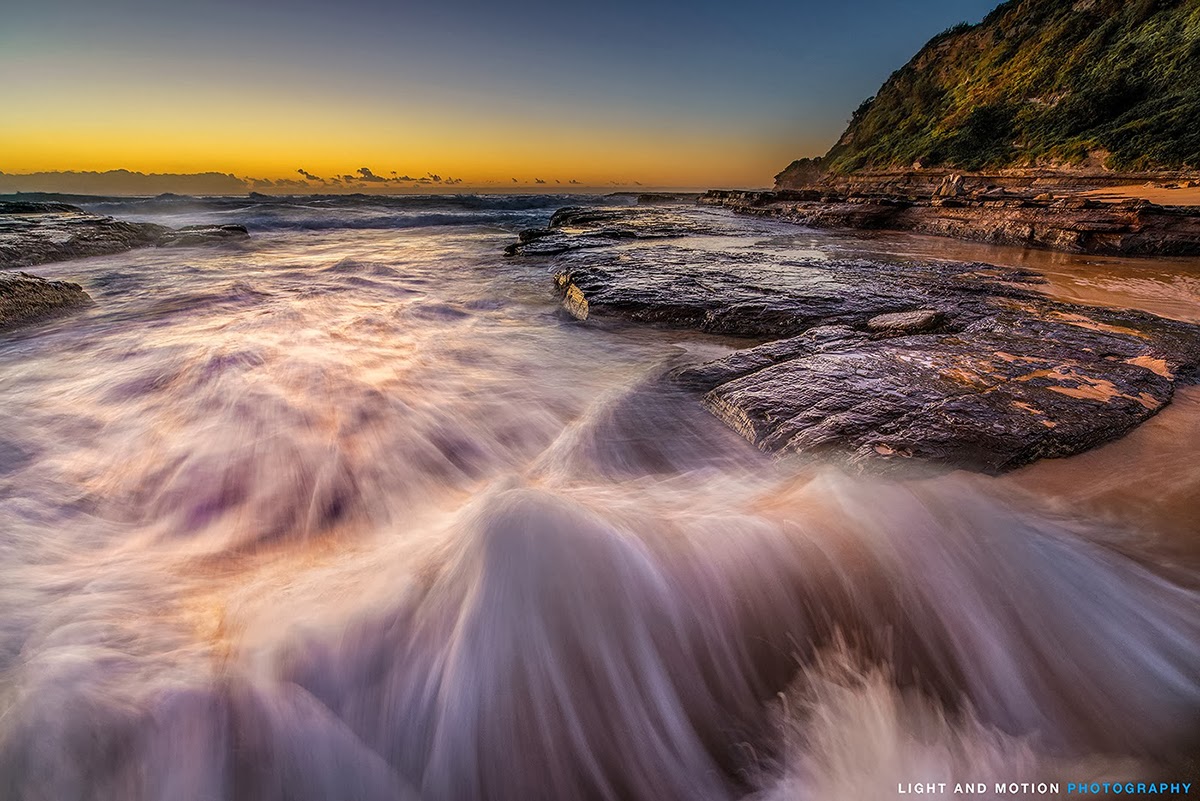
Updated 12th December 2013
We’ve been using the A7R for both landscape shoots as well as some event photography now. We are getting to know it better, and it keeps surprising us with its IQ, versatility and compatibility with Canon gear.
1. Firstly, landscape shoots in portrait orientation have been problematic, as there has been no dedicated L-plate available. We’re sure that Really Right Stuff will eventually come out with a L-plate for the camera and grip, but we have improvised a solution in the meantime. Using any standard Arca-Swiss baseplate, the generic Acratech L- plate fits perfectly. Even the opening for the cable release works and is in the right place.
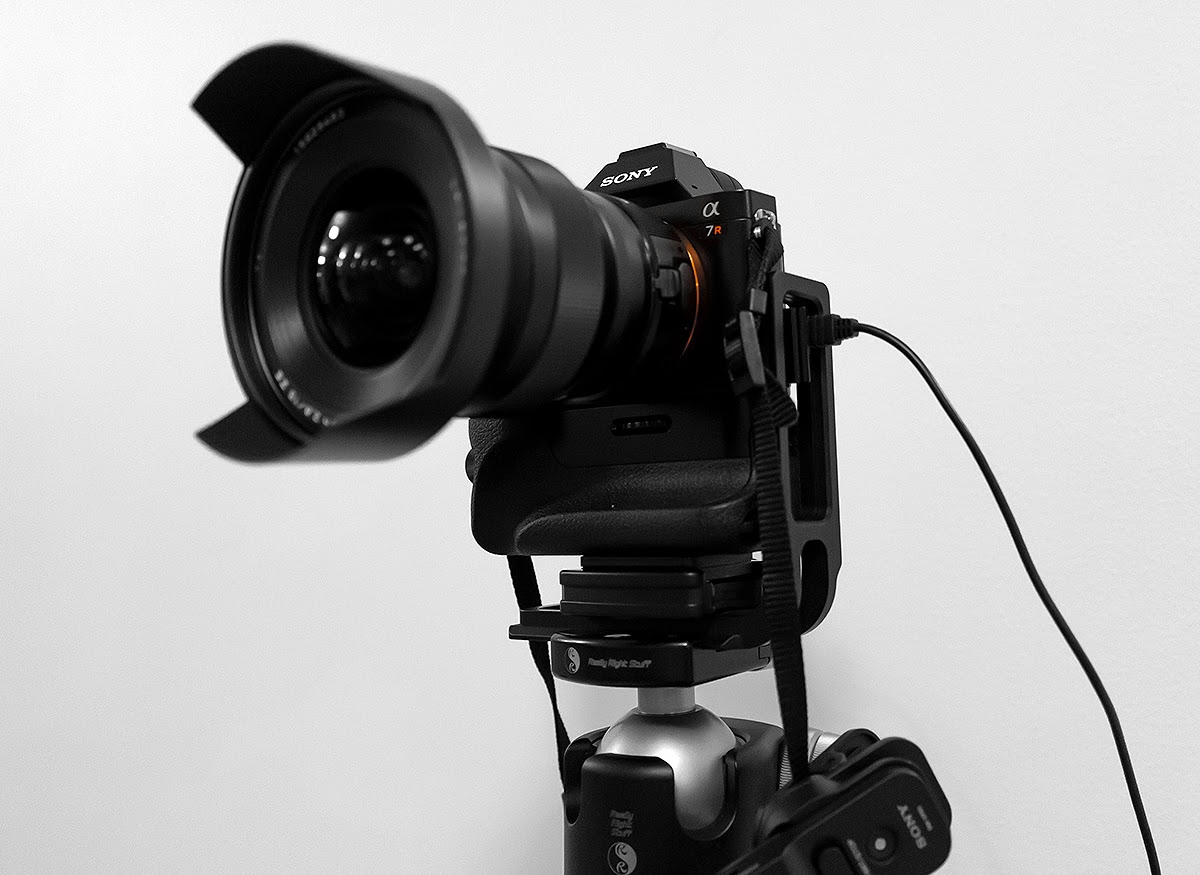
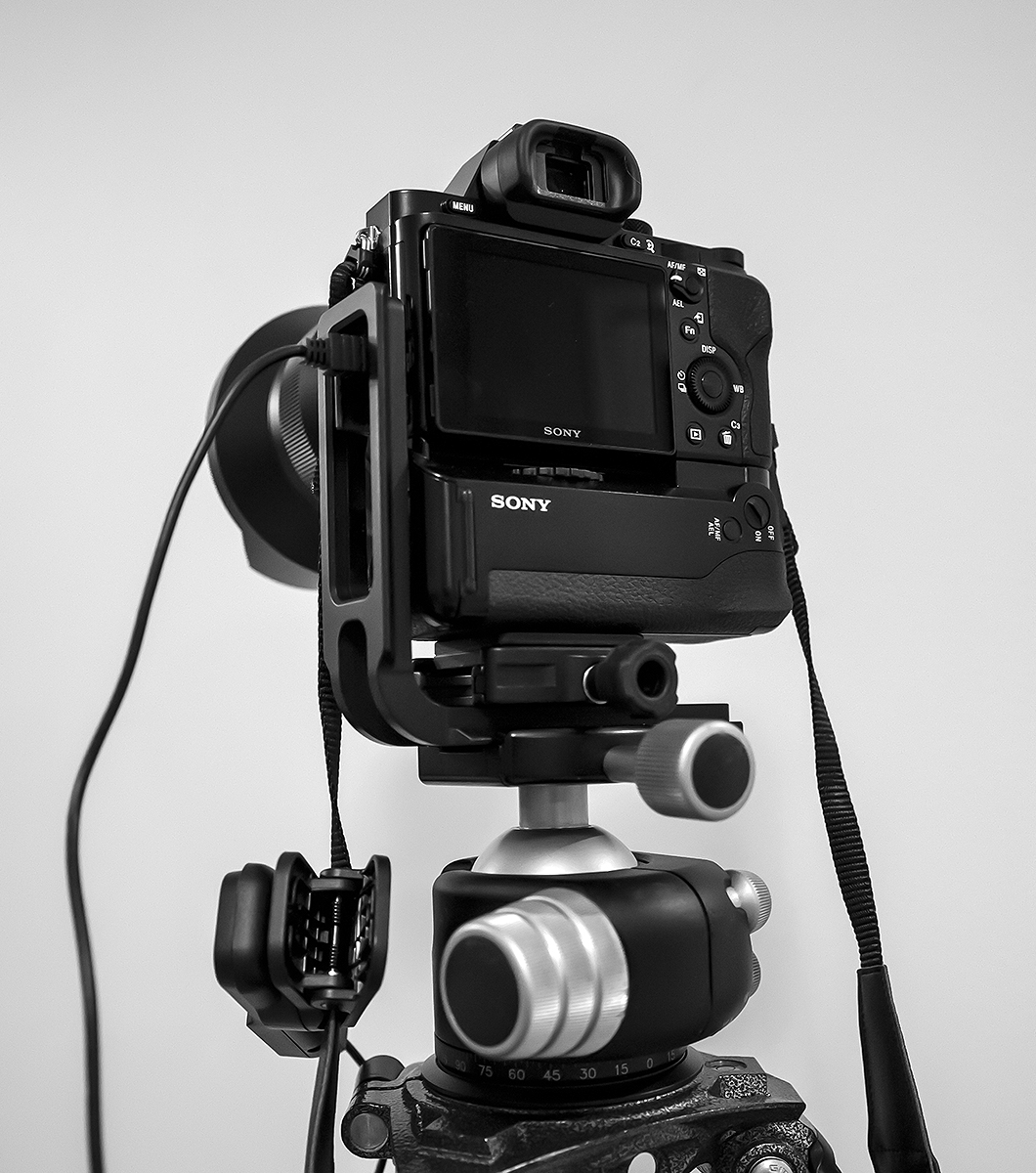
The combination of the weight of the battery grip, the L-Plate and the tripod mounting of the camera body has eliminated any suggestion of shutter shake for us. It is non-existent with this setup. Shutter shake or blur has been reported when tripod mounting the A7R with either the Metabones Adpator tripod mount or the tripod plate on long lenses. This leaves the A7R body unsupported. As the A7R is relatively light, it is vulnerable to shutter shake when the body is unsupported. The Acratech L-plate mounting solution shown above prevents this problem.
For lenses longer than 100mm, we have mounted the 70-200mm f2.8L IS, 300mm f2.8L IS and 400mm f2.8L IS using the lens tripod mount, and have not experienced any shutter shake with the A7R when the battery grip and L plate are attached. We presume the extra weight dampens any shutter shake that may be present.
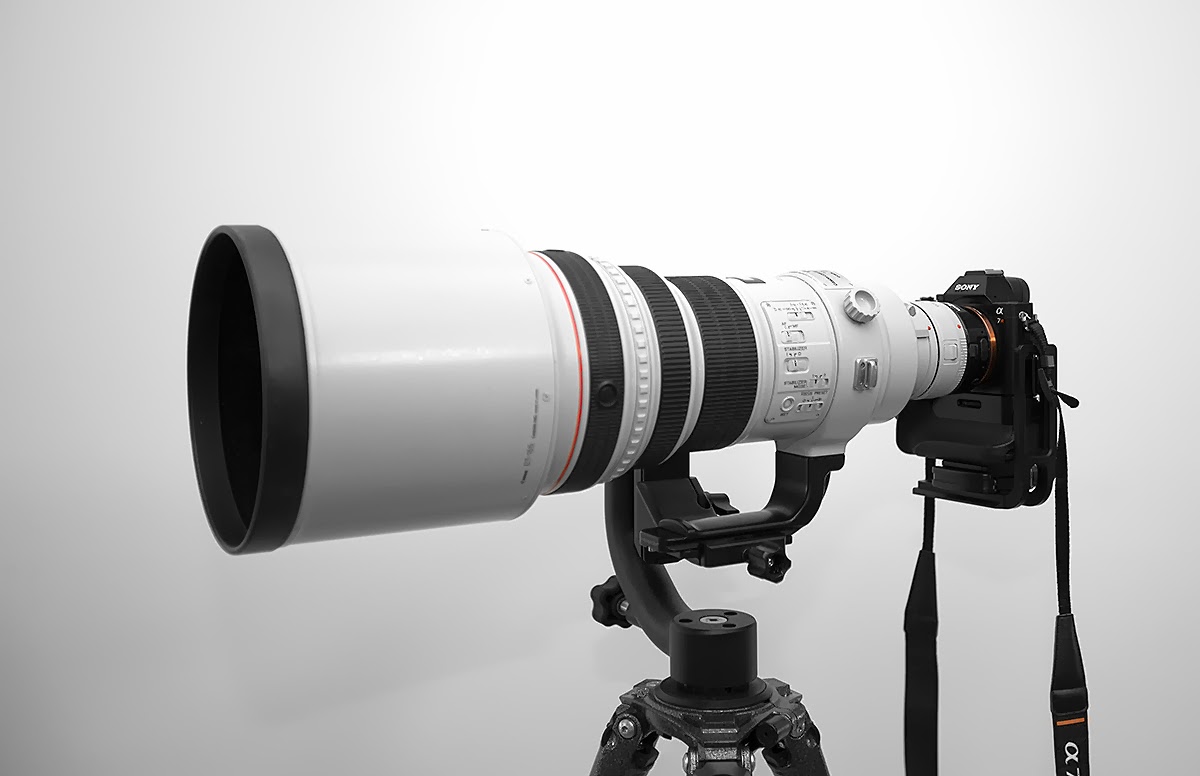
Here is an 15 image panorama taken from Elephant Mountain, Taipei, overlooking the city at sunset. Details are: Sony A7R, Metabones adaptor, Canon 70-200 F2.8L IS @ 70mm, ISO 100, f13, 13 sec. The final image is 26,000 x 8000 pixels and there is absolutely no evidence of shutter shake.

2. Secondly, the Canon EX series of flash units are compatible with the A7R hot shoe in Manual mode. Obviously ETTL settings are not conveyed, but the flash is fired in manual mode, which is generally how we use flash units 90% of the time anyway. We used both the 580EXII and 430EX in this fashion without any issues.
The Canon flash fits and lock into the Sony hot shoe, although the rear 2 contacts of the flash are outside the hot shoe surface. Nevertheless the flash fires in manual mode every time the shutter is pressed.
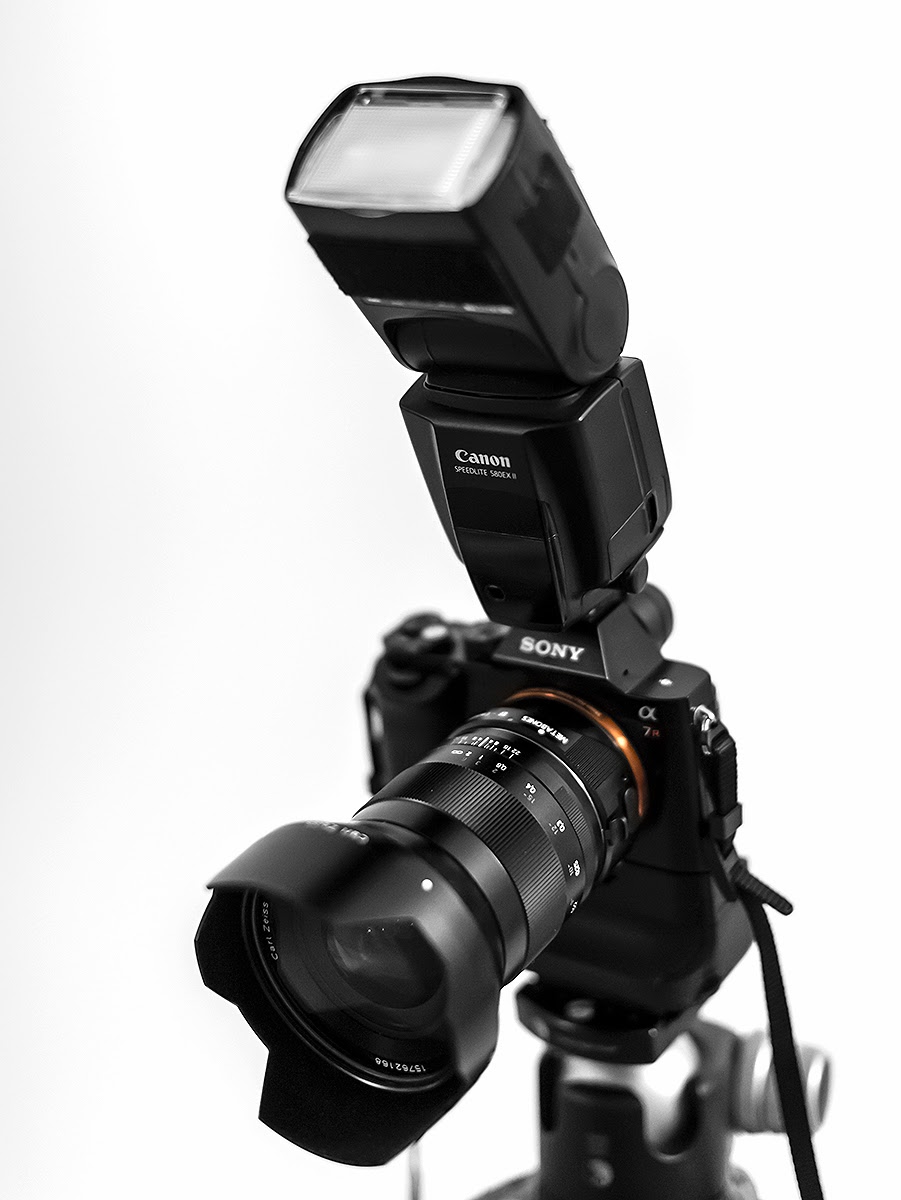
3. Thirdly, we initially considered that portrait and event photography with the A7R would be an issue with Canon EF lenses and the Metabone Adaptor, given the slow autofocus. We have been able to quickly and accurately manual focus with Canon and Zeiss EF lenses using the focus magnifier function through the EVF. We assigned the focus magnifier function to the C1 custom button.
However, we have also been impressed with the focus peaking function of the A7R. It seems to work better than on other E-mount cameras and is surprisingly accurate. Focus peaking highlights the area of the image in focus in both the EVF and on live view. There are 3 options for focus peaking colour – red, yellow and white, and we prefer yellow as it is distinctive yet not distracting. The following image highlights the areas in focus in red though, as it is more evident in photos.
Focus peaking is just the detection of micro-contrast or fine detail. This together with the focus magnifier function enables easy manual focus of any EF lens. We recently used the A7R in this fashion for event photography with impressive results. Perhaps we need to rethink the potential uses of the A7R, and it may not be just limited to landscape photography and tripod mounts.
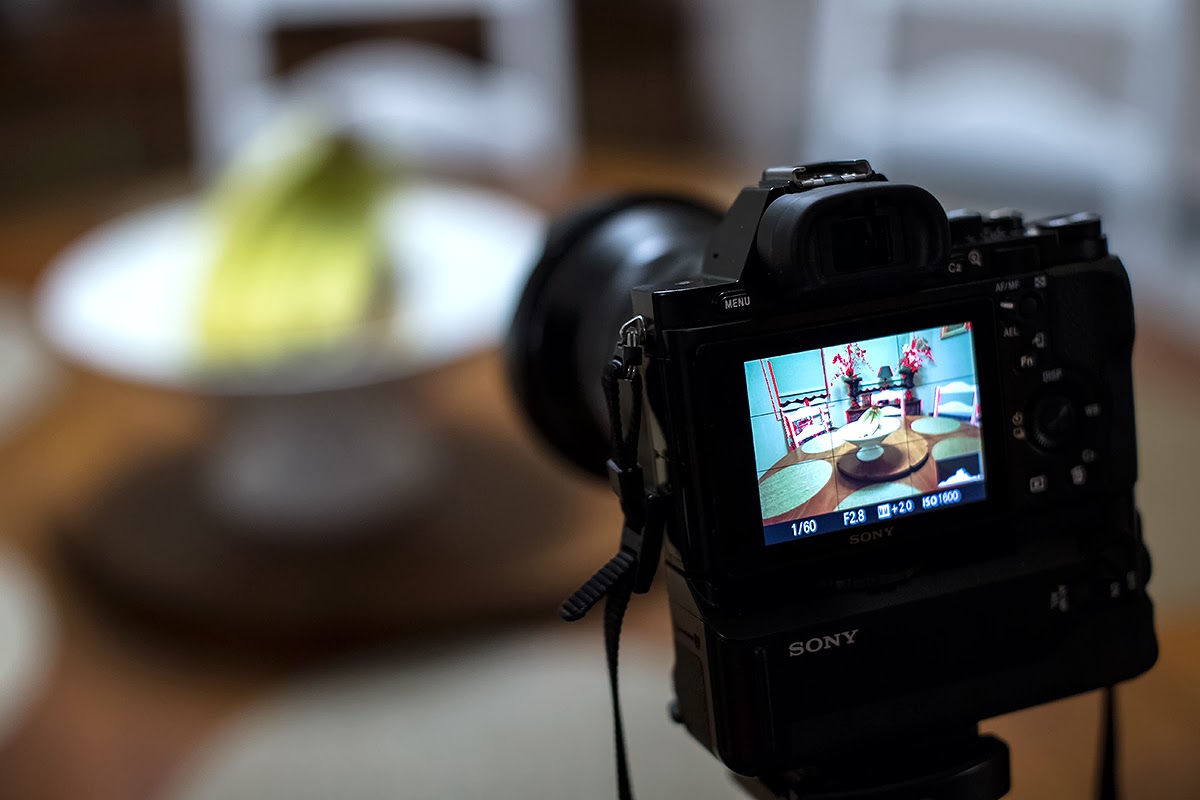
Here are some examples of hand held portraits with the A7R, using the Canon 70-200 f2.8L IS, with manual focus aided by focus peaking:
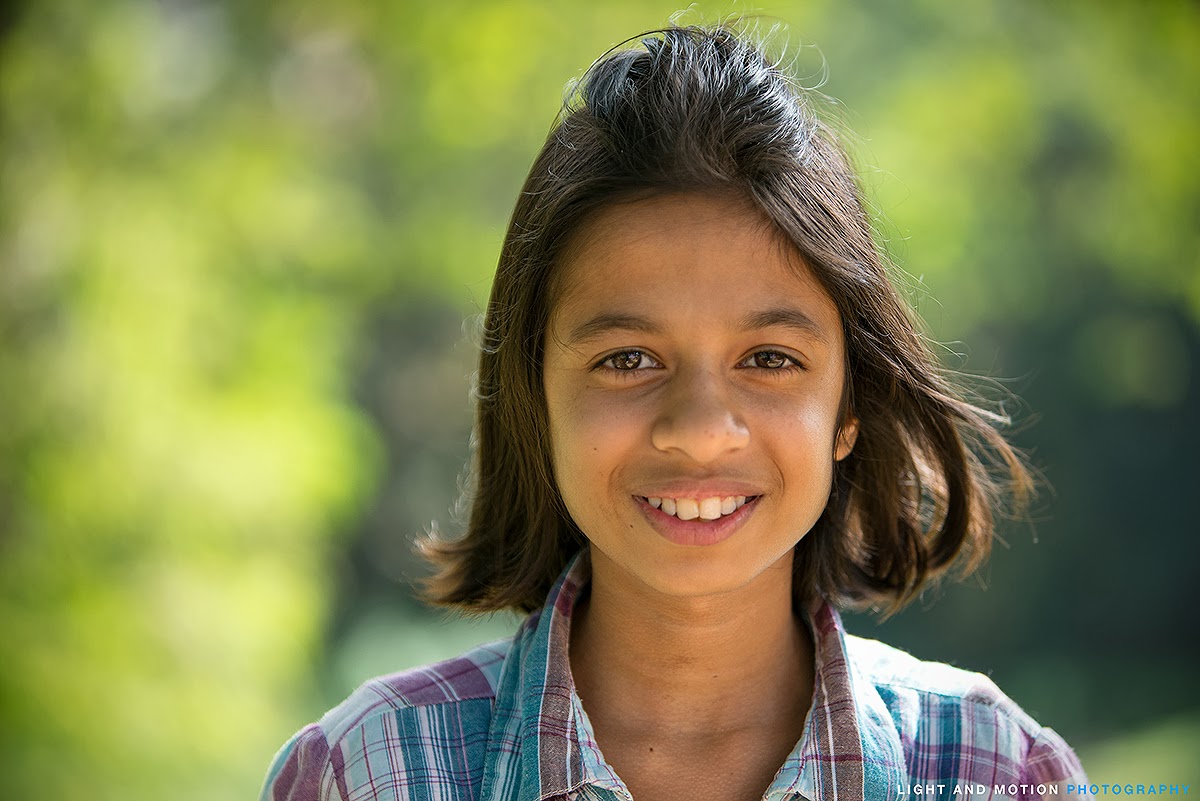

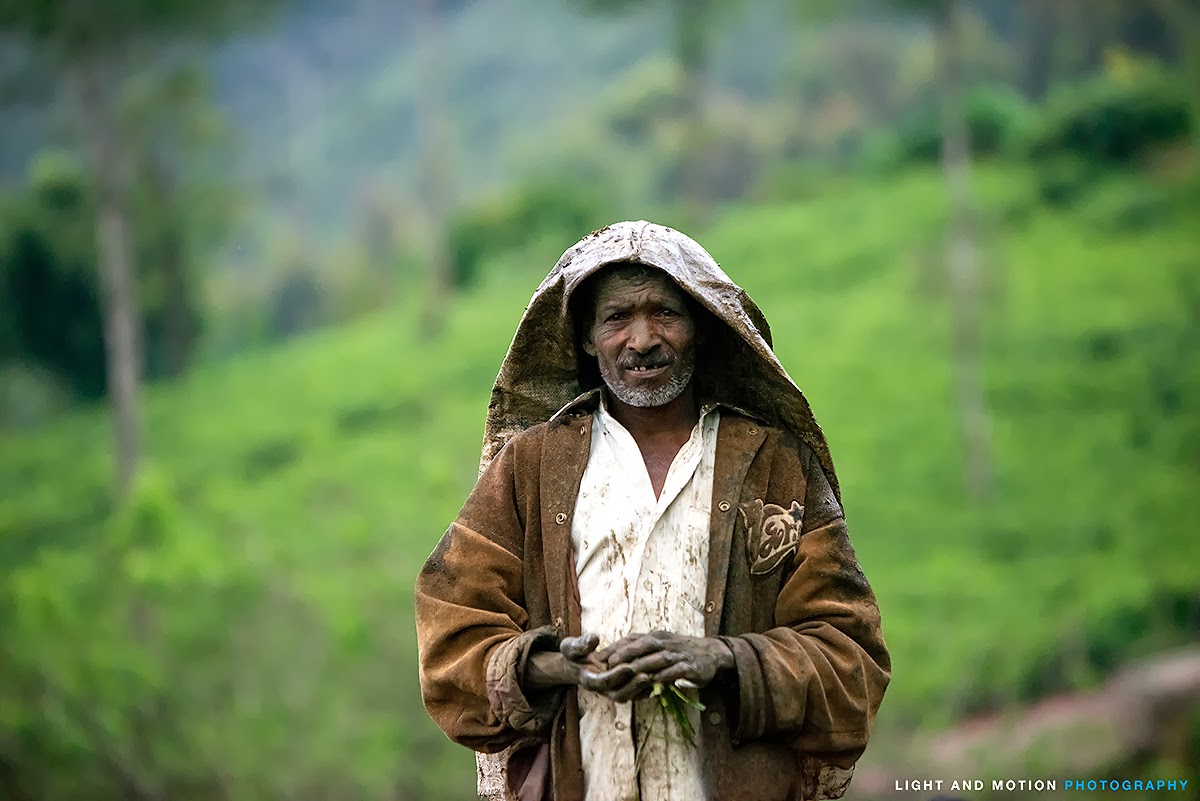

Comments (click to expand)